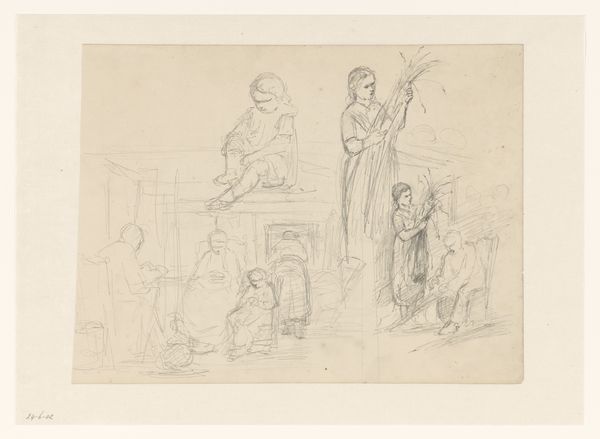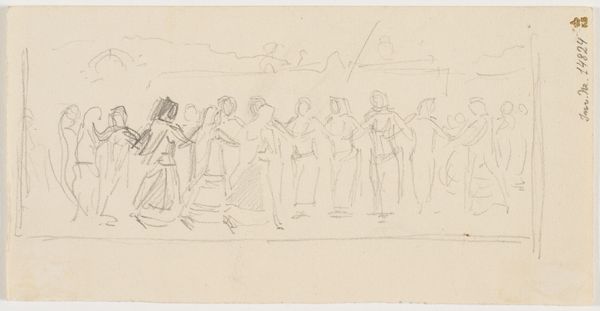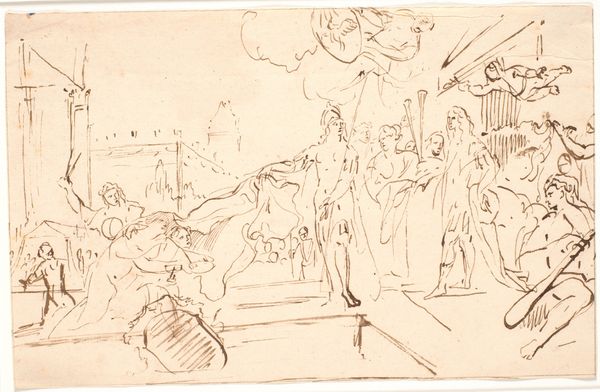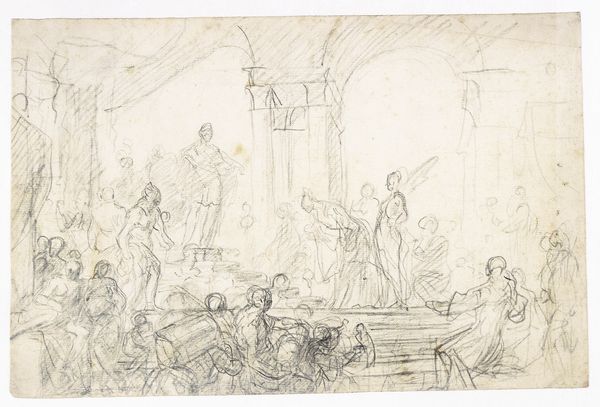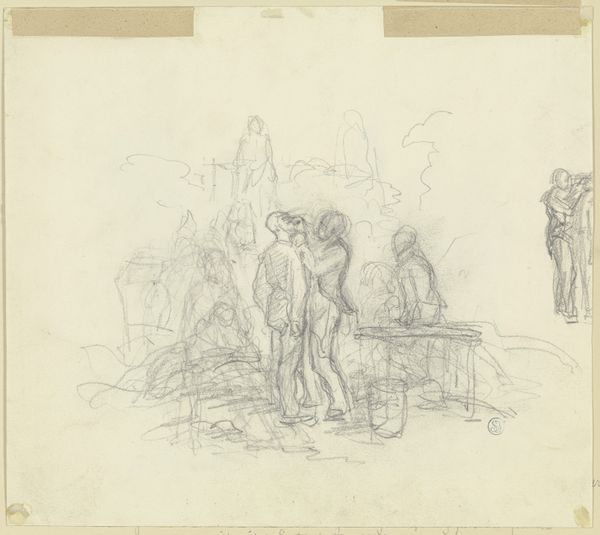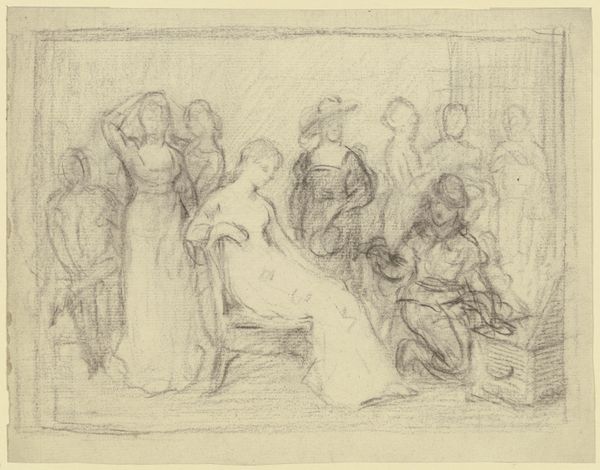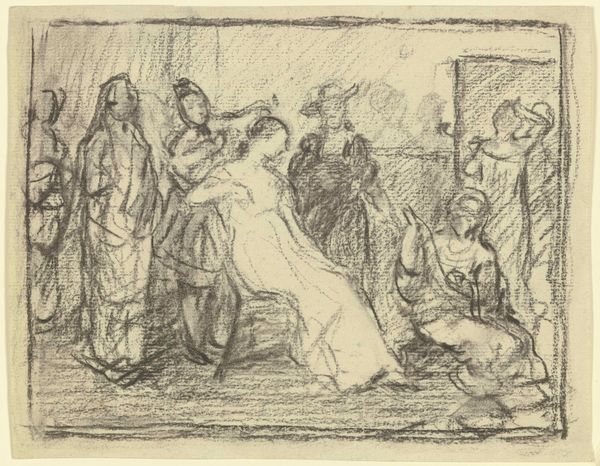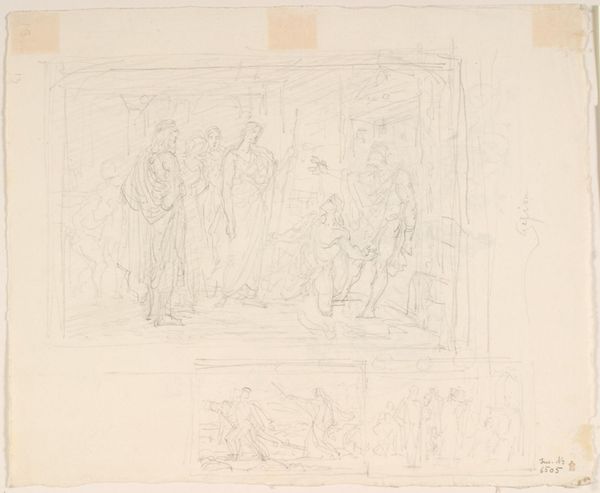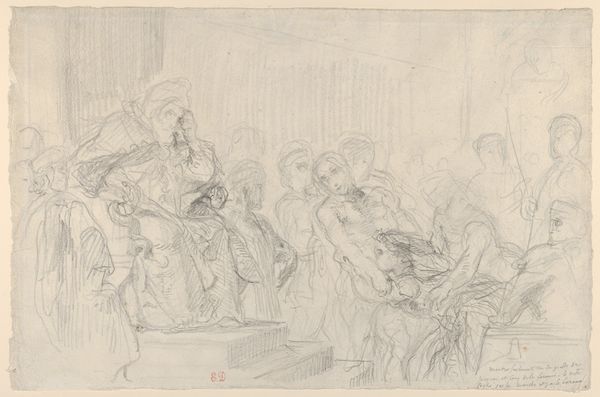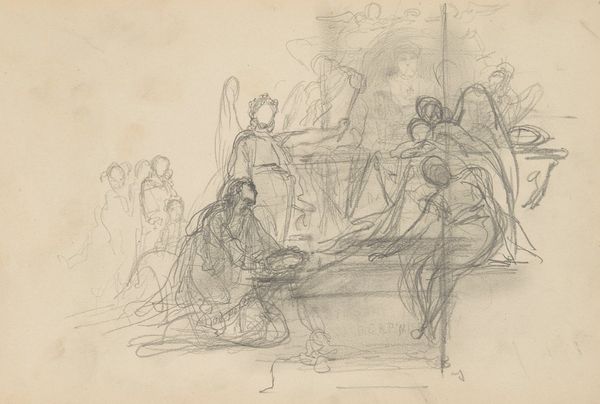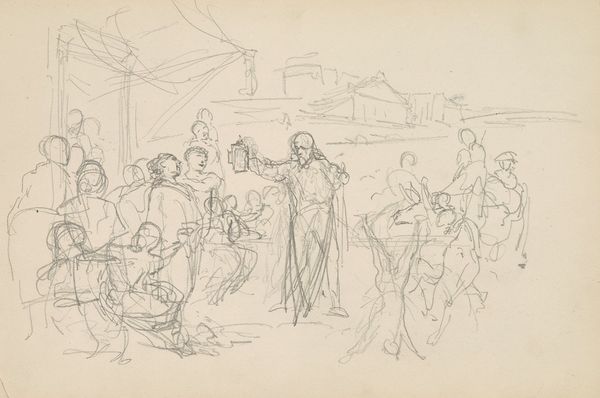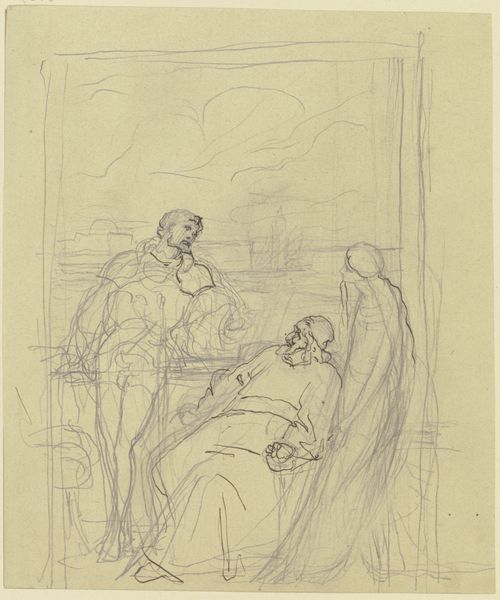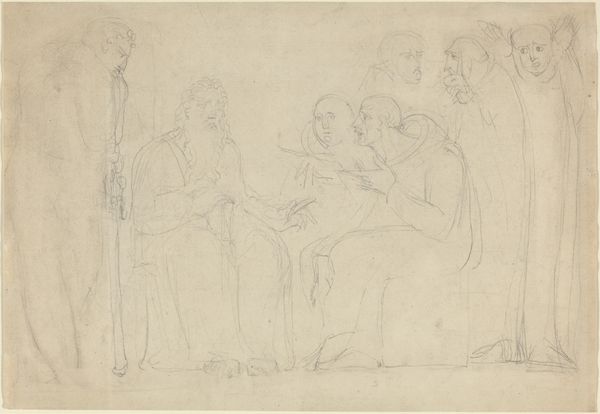
drawing, pencil
#
drawing
#
narrative-art
#
figuration
#
romanticism
#
pencil
#
genre-painting
Dimensions: 8 x 11 1/8 in. (20.32 x 28.26 cm) (image)
Copyright: Public Domain
Curator: Auguste Raffet's pencil drawing, "In Church," created in 1849, depicts a scene of communal worship and is currently held in the collection of the Minneapolis Institute of Art. Editor: The first impression is quite haunting; it’s all rendered in such delicate strokes, creating a sense of ethereal fragility within this worship setting. Curator: Indeed, the medium itself—pencil on paper—lends to this transient quality. Raffet's choice reflects the Romantic era's preoccupation with emotional depth and subjective experience. Think about the production of pencils at this time, too – the growing accessibility facilitated wider artistic engagement. Editor: I'm especially drawn to the composition – the contrast between the women on the left, shrouded in prayer, and the men on the right, some seated and appearing less devout. What does this positioning tell us about the social constructs influencing worship spaces? Are they of a lower social class? Curator: That’s an interesting take. Consider the institutions of the 19th century, particularly the church, and its complex relationship to power, class, and gender. Perhaps Raffet is portraying varying degrees of engagement, the expectations and constraints placed upon different members of society. The somber material reality and arrangement of this drawing could mirror those very constraints. Editor: Precisely. And beyond the institutional context, how was the image perceived by the broader public? Were such depictions of everyday piety common? What was its potential political significance amidst the social and political upheavals of mid-19th-century France? Was it well-received? Curator: Such works had a role to play in reinforcing societal norms, promoting social stability during a period of great instability. These types of images become vehicles for transmitting moral and social values that resonated with a conservative section of the population. The production process is inherently bound to the politics of the time. Editor: Absolutely. Examining it, I consider what purpose it served at the time for both the artist and audience in negotiating ideas around religion, social roles, and public life. Curator: This exploration of "In Church" really emphasizes how intertwined material choices, social structures, and individual expression can be, demonstrating the artwork as a product *of* its time, made possible by particular social forces, in a complex dance between the sacred and the secular. Editor: Indeed. Considering Raffet's work helps us re-examine the artwork, prompting discussions of artistic production and its socio-historical implications.
Comments
No comments
Be the first to comment and join the conversation on the ultimate creative platform.
